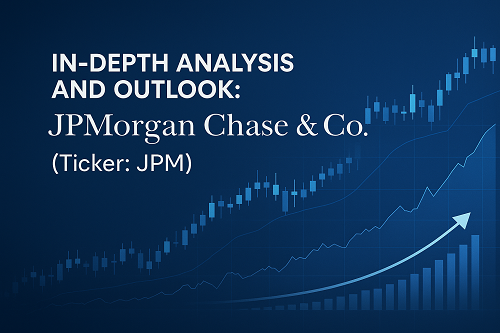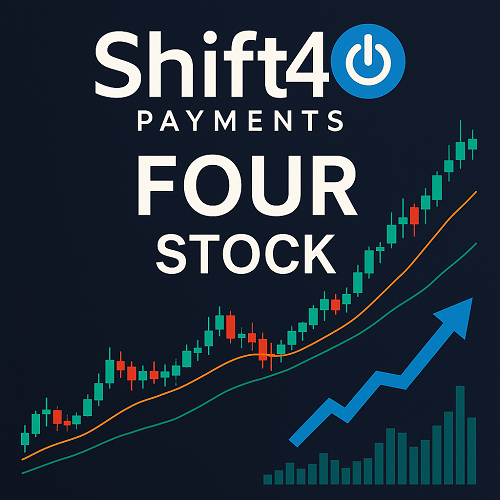JPMorgan Chase & Co. (NYSE: JPM) stands out as one of the most systemically important financial institutions in the U.S. Its scale, diversified operations and brand strength create both robustness and complexity. As we move through 2025, the jpm stock price and other key questions for investors include:
- How well is the company navigating margin compression and deposit competition in a low-rate environment?
- How viable is its growth aspiration in investment banking, markets and international expansion?
- What risks (credit, regulatory, macro) loom that could challenge its leadership position?
- Is the current valuation offering an adequate margin of safety for the risk-reward profile?
In our detailed breakdown below, we will provide: business overview, recent financials, segment reviews, strategic initiatives, valuation and stock outlook, and key risks. The objective is to provide deeper insight than typical summary pages and equip you with a fulsome view of JPM’s investment thesis in 2025.
Company Overview & Competitive Positioning
Corporate Profile
Founded through a long sequence of mergers (including Chase Manhattan Bank and J.P. Morgan & Co.), JPMorgan Chase is today the largest U.S. bank by assets and one of the most influential globally.
It offers a full-spectrum of financial services: consumer & community banking, commercial banking, corporate & investment banking, asset & wealth management, and treasury & securities services.
Competitive Strengths
- Scale & Diversification: Its wide mix of businesses (retail, commercial, investment) provides some stability when one segment is weak.
- Brand & Franchise: As a global banking leader, it has strong access to capital markets, deal flow, and institutional clients.
- Capital & Risk Buffer: JPM has emphasized its “loss-absorbing capacity” and strong balance sheet.
- Operational Efficiency: Historically, JPM has been among the better-performing U.S. banks in terms of return on equity and cost discipline.
Competitive Challenges
- Margin Pressure: In a rising-then-stabilising interest rate environment, net interest margins (NIM) come under pressure and competition for deposits intensifies.
- Regulatory & Systemic Risk: Being a “too big to fail” institution means heavy regulatory scrutiny and compliance costs.
- Fintech / Digital Disruption: Non-bank competitors (payments, digital banking) are increasingly relevant, especially in consumer/credit card markets.
- International / Geopolitical Exposure: As JPM expands globally (e.g., Asia-Pacific) it must manage foreign regulatory regimes, currency risks, and slower growth markets. Recent news indicates expansion into Asia Pacific corporate banking with ~20% headcount growth.
Recent Financial Performance (as of Q3 2025)
Key Metrics
- In Q3 2025, JPM reported revenue of ~$47.1 billion (up ~9% YoY) and net income around ~$14.4 billion, with EPS ~$5.07.
- Non-interest expense rose ~8% YoY, reflecting higher volumes & activity-related costs.
- The bank flagged ongoing risks from the labour market, credit-cycle concerns and regulations.
- Analyst consensus (MarketBeat) shows a “Moderate Buy” with average 12-month target ~$326.38 (~3.8% upside from ~$314 current).
Segment Highlights
- Consumer & Community Banking: Retail banking remains relatively stable but is seeing margin headwinds (particularly deposit costs and low interest rates) and credit issues area by area (e.g., credit-card charge-offs).
- Corporate & Investment Bank (CIB): Strong growth in markets revenue, fees and M&A advisory continues. Q2 commented markets revenue up ~15% YoY.
- Asset & Wealth Management: Growing AUM (assets under management) and fee revenues benefit from higher markets volatility and client wealth expansion.
- Commercial Banking: Growth in mid-sized and large business lending; but sensitivity to economic slowdown and credit losses.
- Net Interest Income (NII): While rising interest rates historically help, deposit costs have increased and loan growth is uneven – NII remains a challenge in a plateauing-rate environment.
Strategic Initiatives & Outlook
Growth Initiatives
- Asia-Pacific expansion: As noted above, JPM is aggressively increasing its corporate banking footprint in APAC, with headcount growth ~20% targeted in 2026.
- “Security & Resiliency” investment initiative: JPM announced plans to invest up to $10 billion in U.S. companies critical to national security (manufacturing, critical minerals, energy, tech) as part of a broader multi-year plan.
- Technology & Digital Transformation: The bank continues to adopt AI, cloud, and digital platforms to reduce costs, improve customer experience, and stay competitive — especially in payments and fraud.
- Capital Return & Dividend Strategy: JPM has implemented large share buybacks and increased dividends, signalling confidence and returning capital to shareholders.
Outlook Commentary
Management has expressed cautious optimism: the U.S. economy remains “resilient” but risks (inflation, trade, slowdown) persist. From Q2 commentary: net interest income outlook raised to ~$92 billion.
Analyst estimates imply modest upside currently, but the five-year view suggests more potential if growth initiatives succeed. For example, some forecasts project ~$446–$568 by 2030 under favourable conditions.
Valuation & Stock Outlook
Current Valuation Landscape
- With the average analyst target at ~$326 and current price near ~$314, potential short-term upside is modest (~4%).
- Some valuation models show the stock trading at ~14–15× forward earnings, with P/B ratios in the ~2–3× range depending on assumptions.
What Would Drive Higher Valuation?
- Improvement in net interest margins and loan growth → higher NII.
- Continued strength in investment banking & markets business, capturing fee income.
- Effective cost control and efficiency gains via digital transformation.
- Favorable macro environment (economic growth, stable interest rates, credit quality).
- Successful execution of strategic initiatives (e.g., Asia growth, “security & resiliency” fund).
What Could Weight on Valuation?
- Further margin compression or deposit cost escalation.
- Unexpected spike in credit losses (especially from consumer cards, commercial real estate, small businesses).
- Regulatory setbacks and higher capital/reserve requirements.
- Global macro headwinds (recession, geopolitics) dampening markets revenue and deal flow.
- Execution risk on growth initiatives (e.g., new investments doing poorly).
Investment Thesis Summary
For a long-term investor (5+ years), JPM offers a compelling base with defensive qualities (large bank franchise, diversified revenues) plus upside from growth initiatives. The key is execution — the ambitious strategic moves must deliver. In the near term, upside appears modest unless there is a favourable surprise. A favourable entry might be justified if one targets a multi-year horizon and is comfortable with banking sector cyclicality and regulation.
Key Risks & Considerations
- Credit Risk: In a potential economic slowdown, commercial/business lending and credit cards may suffer. Provisioning may rise.
- Margin / Interest-Rate Risk: If rates fall or flatten, or deposit costs rise faster than yields, NIM could compress sharply.
- Regulatory / Legal Risk: Large global bank, heavy regulation, and occasional large legal settlements.
- Global Expansion Risk: Expanding in APAC/Others introduces jurisdictional risk, execution challenges and potential slower growth.
- Valuation Risk: With limited near-term upside per consensus, margin of safety is smaller than in many growth stories.
- Macro Risk: A broad banking downturn, recession, or liquidity crunch would impact JPM significantly (given size & leverage).
Conclusion
JPMorgan Chase & Co. remains a global banking powerhouse with a diversified business model, strong brand and many tailwinds (digital, global expansion, fee income). That said, several headwinds — margin pressure, credit risk, regulatory complexity, limited near-term upside — caution for heightened expectations.
For investors comfortable with banking sector cyclicality and systemic risks, JPM offers a reasonable core holding with upside potential over the medium-term (3-5 years) if strategic initiatives yield success. For those seeking near-term high growth, the return profile appears modest at current valuations.





 XAUT-USD
XAUT-USD  AMD
AMD  MARA
MARA  SHOP
SHOP  BULL
BULL  CL=F
CL=F